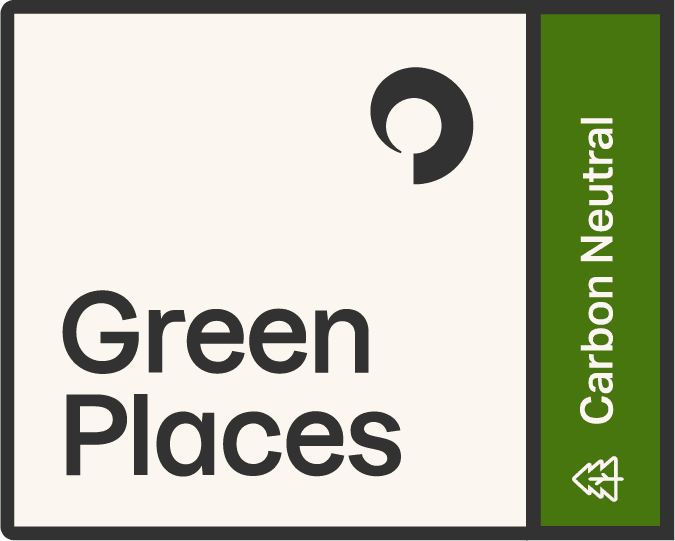Note: This is the first installment of a two-part blog post covering basic terminology, acronyms, abbreviations and definitions used in media planning and buying.
We can probably all agree that in today’s world we live in a constant state of information overload. Every time you turn around old Mr. Webster has found something new to define. From dabbin’ to hashtags and BFFs. Oh my!
In fact, nothing terrifies me more than knowing in a matter of a few short years my kids who are now toddlers will carry on text conversations with their besties using nothing other than emojis and the wingdings font. How’s a father to cope?
As if the world isn’t changing its basic forms of communication fast enough, we marketers tend to pile on the jargon even thicker. So it’s no surprise that on more than just a handful of occasions you get that look from a client that reminds you of yourself the first time you ever saw a letter in the middle of a math equation. Then of course, the look is inevitably followed by a request to explain the last five acronyms you just used.
In an effort to alleviate some of the confusion, I’ve attempted to compile a list of the most commonly used and commonly confused terms in media planning and buying. After you make it through these you may be thinking I missed a few, and you would be right. So stick around for part 2 of my post where the acronyms keep flying, and I break down the math behind the media.
| Term | Common Acronym or Abbreviation | Category | Definition |
| Ad Tags | None | Creative | Simply referred to as “tags” these are the snippets of code sent to media providers that serve the creative through an adserver. Tags allow the agency centralized tracking and reporting as well as a source of data to audit the media buy. |
| Graphics Interchange Format | GIF | Creative | Pronounced “jiff” according to its creator, many display ad formats are still created in this format. GIFs can be either static or animated, but animation is limited to rotating frames. |
| Hypertext Markup Language Version 5 | HTML5 | Creative | This development language is also the latest ad format accepted and recommended by Google. HTML5 ads are beneficial because user experience is the same regardless of the environment or device where the creative is viewed – desktops, tablets or mobile phones. HTML5 can incorporate extensive animation, video and interactive content into the ads. |
| Inline Frame | iframe | Creative | An HTML coding component which allows an element to be embedded within the HTML page. Most commonly ad tags are served on a web page in an iframe. It also refers to a specific ad tag format used to serve creative. |
| JavaScript | JS | Creative | A programming language. In digital advertising, ad tags can be generated and served using JavaScript. The benefit is that JS tags typically allow for more flexible ad formats and better tracking capabilities. |
| Joint Photographic Experts Group | JPG or JPEG | Creative | JPGs are an image file format still used for some display ads. Ads are static, and are generally not a recommended format to be used by advertisers. |
| Ad Server | None | Digital | An ad server is a platform used by an advertiser to centralize a media buy, track and report on performance. At the core of the technology is the ability for the software platform to display the advertiser’s creative using code – enabling media providers the ability to “serve” the ad using ad tags. |
| Application | App | Digital | The term is specifically used to differentiate an application on a mobile device, such as a mobile game, from programs on a traditional desktop computer. |
| Application Programming Interface | API | Digital | An application programming interface (API) is a language format, written in code, which allows programs and applications to communicate with each other and their respective operating systems. The language creates a standard of rules and protocols which programmers use to develop software that doesn’t conflict. In the mobile ad tech sector, API-powered mobile devices offer greater visibility into a user’s lifestyle, delivering data that can create marketing opportunities and inform strategic decisions. With regard to technology platforms, APIs allow for the exchange of data. For example, product feeds from a website to Google Shopping. |
| Cookie | None | Digital | A small snippet of code saved by a user’s web browser which enables an advertiser to re-market to that individual. Cookies are also used by websites to create better user experiences. For example, saving passwords to auto-fill a log in field. |
| Deep Linking | None | Digital | Deep links are mobile links that operate much like hyperlinks, but instead of directing users to a web page, deep links send them to a specific screen within a mobile application. There are three types of deep linking technology in use today: basic deep links, deferred links, and contextual deep links. Deep links provide a clear way for app publishers to identify, address, and transport users to specific content within apps. |
| Display | None | Digital | Digital ad creative taking the form of banners, videos or other images. Sub-categories include desktop display, mobile display and tablet display. Segmenting even further, display can include additional breakdowns such as desktop video or mobile video. |
| In-Stream Video | None | Digital | Video served within the frame of a video player embedded on a website. The most common format is a YouTube video. |
| Out-Stream Video | None | Digital | Video served outside of an embedded video player on a website. Out-stream videos are typically a free-standing ad unit that appears within the context of a site but that can be closed or paused at will by a user. |
| Pay Per Click | PPC | Digital | A pricing model used to place paid search ads in search engine marketing as well as by some display media vendors. |
| Pixel | None | Digital | Originally representing a single dot on a screen made up of thousands, a pixel in digital advertising now commonly refers to a single snippet of code served on a website. This is used synonymously with the term cookie. |
| Run of Network | RON | Digital | Similar to ROS, RON is a placement with a network of sites that means an ad can run anywhere within the network. |
| Run of Site | ROS | Digital | Placing an ad online with a publisher that can appear anywhere within a website. |
| Run of Web | ROW | Digital | The broadest form of digital advertising, run of web refers to the practice of buying media programmatically with very little or no targeting defined. An ad can show up anywhere online through inventory provided by publishers through the ad exchanges. |
| Search Engine Marketing | SEM | Digital | Search marketing that encompasses both paid search and search engine optimization. SEM is often used only to describe paid search, but actually does include SEO as well. |
| Search Engine Optimization | SEO | Digital | The process of managing website content and traffic that increases visibility to a brand through organic or natural search listings. |
| Software Development Kit | SDK | Digital | A set of programming tools for developers and programmers to use for the creation of a wide range of applications for various software packages. In mobile tech, these tools are often made available to customers, offering an intuitive, easy-to-use programming kit to develop their own mobile apps. Once created, apps created from publishers and consumers alike can be published and sold over the popular app marketplaces. |
| Viewability | None | Digital | This refers to whether or not a digital ad was viewed by a user. When an ad is served, the impression can be served in-view or out of view. If a user never scrolls to a portion of the page where the ad is being displayed, it is a non-viewable impression. Different specifications are used to define whether or not an ad is viewed, but the IAB standards require 50% of the ad to be viewable for one second in standard desktop display. For larger units, 30%. For video, 50% should be viewable for two seconds. |
| Above the Fold | ATF | Digital and Print | An ad served at the top of a website or on the upper section of a newspaper literally referring to above the fold in the paper (origin of the term). |
| Below the Fold | BTF | Digital and Print | An ad served on the lower portion of a website requiring a user to scroll down to see it. In a literal sense, it can also refer to a print ad positioned below the fold in a newspaper (origin of the term). |
| Added Value | A/V or AV | General | Advertising inventory or services provided by a media vendor at no cost to the advertiser. This is done in good faith and as an added incentive to purchase other media and provide additional boosts in performance for the overall buy. |
| Branding | None | General | As opposed to direct response, branding refers to an advertiser’s objective to create general awareness of their brand or product across a target audience. Branding does not necessarily lead to immediate sales. Rather it represents the very top of a conversion path – making a consumer aware regardless of need or desire to purchase. |
| Dayparting | None | General | The practice of dividing a day into different time slots in which an ad will run. In broadcast this is generalized by time blocks such as primetime or early morning in TV or drive time in radio. In digital, dayparting is broken down by hour of the day. |
| Designated Marketing Area | DMA | General | Geographical areas that receive the same general television and radio broadcasting. Digital can also be targeted to DMAs. |
| Direct Mail | DM | General | The advertising tactic using snail mail to send marketing materials to consumers. There are multiple formats. |
| Direct Marketing | None | General | A brand that communicates directly to a consumer as opposed to relying on third-parties or retailers to promote their products or services. |
| Direct Response | DR | General | As opposed to branding, direct response is a campaign objective to directly influence consumers to take action. Specific response goals are typically defined for the campaign such as sales, calls, leads, etc. |
| Geotargeting | None | General | The process of targeting ads to a specific geographical area. |
| Gross Cost | None | General | The total cost of media including any fees, commissions and/or mark-ups. |
| Impression | None | General | A single instance of an advertisement being exposed to a consumer. A listener on radio hearing one ad spot equals one impression, or a user seeing a banner ad on a website equals one impression. In digital, when an impression is served, the process involves an ad call where the code on a site calls on the adserver to serve the requested advertisement. An impression does not occur until the code is actually downloaded and the creative is displayed. This typically occurs in milliseconds. |
| Net Cost | None | General | This is the base cost to purchase media. Net cost is what the publishers or media sources charge the agency. |
| Reach | None | General | The total number of individuals or households exposed to a brand over a given amount of time. It can be applied to paid media, non-paid media, or a combination of both. |
| Targeted Reach | None | General | The total number of individuals or households reached that fall within a specifically targeted demographic. Examples include household income, gender or age. |
| Assist | None | Media Analytics | The third position in an attribution funnel. The assist happens just prior to the final touch-point in a conversion path. The importance of assist is that it is commonly a measure of intent – showing a lower-funnel engagement on the part of the consumer with the advertiser. |
| Attributed Sales | None | Media Analytics | Sales that are tracked within an attribution model as opposed to free-standing sales or sales data that occurs outside of trackable marketing touchpoints. |
| Attribution | None | Media Analytics | The process of modeling conversion data to show specific trends driving path to conversion. Models take into account reach and frequency to understand effective marketing tactics driving consumers’ decision-making process. |
| Attribution Funnel | None | Media Analytics | Similar to a basic marketing funnel, the attribution funnel consists of four basic positions within a consumer’s path to purchase. Origination (first touch), Roster (frequency driving purchase), Assist (measure of intent) and Converter (final touch). |
| Click | None | Media Analytics | The act of clicking on a digital ad. This can refer to a mouse click in a desktop environment or a touch click in mobile or on tablets. |
| Converter | None | Media Analytics | The final touch-point in an attribution model. This is the last point of marketing a consumer is exposed to prior to the act of converting. |
| Key Performance Indicator | KPI | Media Analytics | Metrics which are typically defined either by the client or by the agency as strategic objectives of the campaign. KPIs serve as a gauge to overall success of the media buy. |
| Last-Click | None | Media Analytics | The last ad or marketing material to be clicked on prior to conversion. With the lack of an attribution model, most marketing analytics platforms only credit a conversion to the source of the last click. |
| Month Over Month | MoM | Media Analytics | A common timeframe for performance analytics, MoM data shows trends on a mid-range cycle. |
| Origination | None | Media Analytics | The first touch-point in an attribution funnel. This is the original exposure to a brand that eventually leads to a consumer converting. It is representative of effective reach. |
| Path to Conversion | P2C | Media Analytics | The process or various brand exposures a consumer experiences during consideration prior to a sale. This is synonymous with a marketing funnel. Paths usually consist of a blend of paid, earned and owned media. |
| Roster | None | Media Analytics | The second position in an attribution model. This is the only position in the model that can make up multiple touch-points. In most conversion funnels, the roster represents the bulk of a consumer’s exposure to a brand or product. For this reason, it represents effective frequency. |
| Total Attribution | None | Media Analytics | When evaluating a path to purchase, total attribution refers to the percentage of time a consumer was exposed to a brand or product for each category of marketing leading to conversion. Typically displayed in a pie chart, total attribution includes percentages for categories such as paid search, display, organic search, social media, broadcast TV, broadcast radio, etc. On a broader level, it can also be broken down into paid, owned or earned media. |
| Week Over Week | WoW | Media Analytics | WoW analytics data is commonly used to show short-range data trends within a media buy. |
| Year Over Year | YoY | Media Analytics | YoY analytics data is commonly used to show executive-level data comparing brand performance at a macro level. Most often this shows how changes in brand strategy and overall marketing strategy impact performance. |
| Year to Date | YTD | Media Analytics | The date range commonly used to show executive level performance for an evergreen media buy. |
| Circular | None | A direct mail piece typically taking the form of a flyer of coupons or sales ads sent on a regular basis. | |
| Free Standing Insert | FSI | A form of print advertising that is inserted into print media such as a newspaper or magazine. It is not bound within the pages of the publication. | |
| Run of Press | ROP | Also referred to as run of paper or run of page, ROP is a way to place print advertisements in a publication without specifying where the ad will appear. The newspaper or magazine may choose where to place it depending on a number of factors such as available ad space, editorial content or page format. | |
| Shared Mail | SM | A form of print advertising combining ads from multiple advertisers in a single packet. Cost is shared across all of the advertisers. | |
| Variable Data Printing | VDP | The process of customizing direct mail based on specific data sets. For example, a flyer that includes copy specifically addressing the homeowner by name. | |
| Ad Exchange | None | Programmatic | The technology platform that enables publishers to provide inventory to advertisers through the programmatic marketplace. Similar to a stock exchange in the financial world, ad exchanges are the central component to real-time bidding – where the actual exchange of bid and inventory occurs. |
| Demand Side Platform | DSP | Programmatic | The marketer and agency side platforms that were developed to purchase inventory off of the ad exchanges in a programmatic fashion. |
| Programmatic | None | Programmatic | A term that refers to the process of automated media buying. Most often this is in reference to inventory bought through a DSP or Trade Desk, but can also refer to self-serve media platforms such as AdWords, Facebook, Twitter or LinkedIn for example. Programmatic inventory can also be purchased on television and radio. |
| Real Time Bidding | RTB | Programmatic | The service being performed by DSPs on ad exchanges. This applies both to display media as well as search engine marketing. Bids are placed in “real-time” on available ad inventory in an auction-based sale. |
| Supply Side Platform | SSP | Programmatic | The software platform used by publishers to manage and sell advertising inventory – making it available to advertisers generally within an ad exchange. |
| Trade Desk | None | Programmatic | Agency side platforms that run off of DSP technology, but strategies, bidding and optimization are managed by the in-house ad agency rather than a sales rep from the DSP side. |








